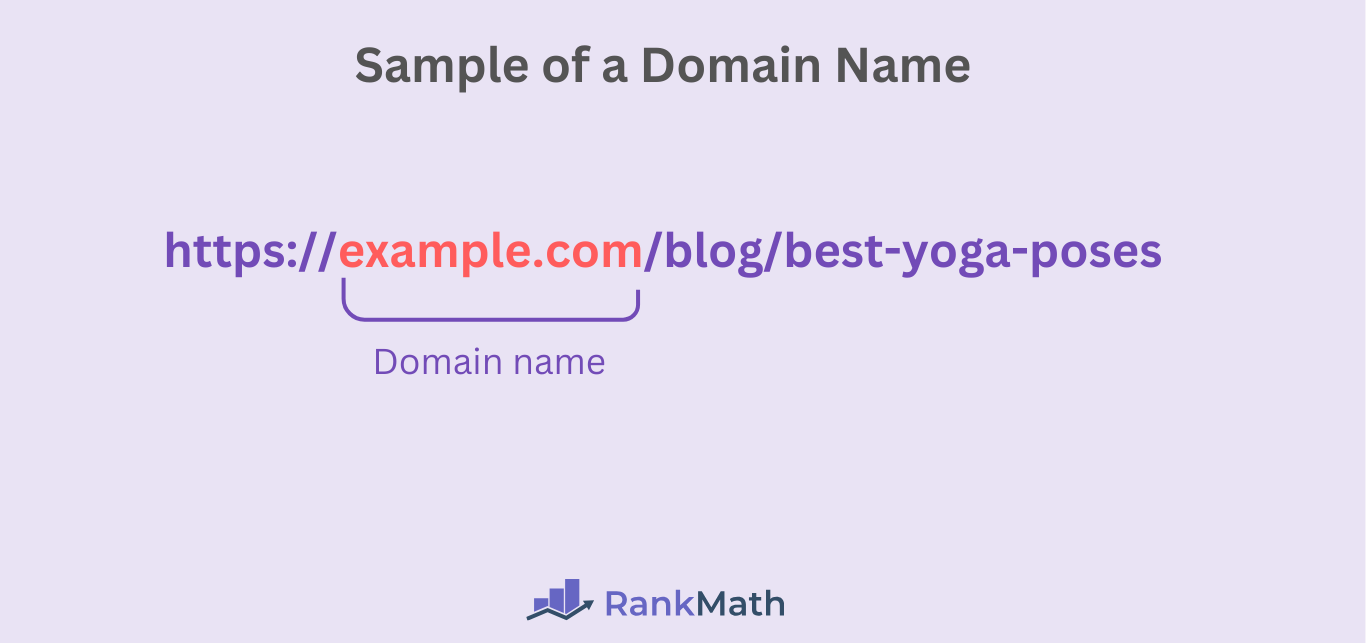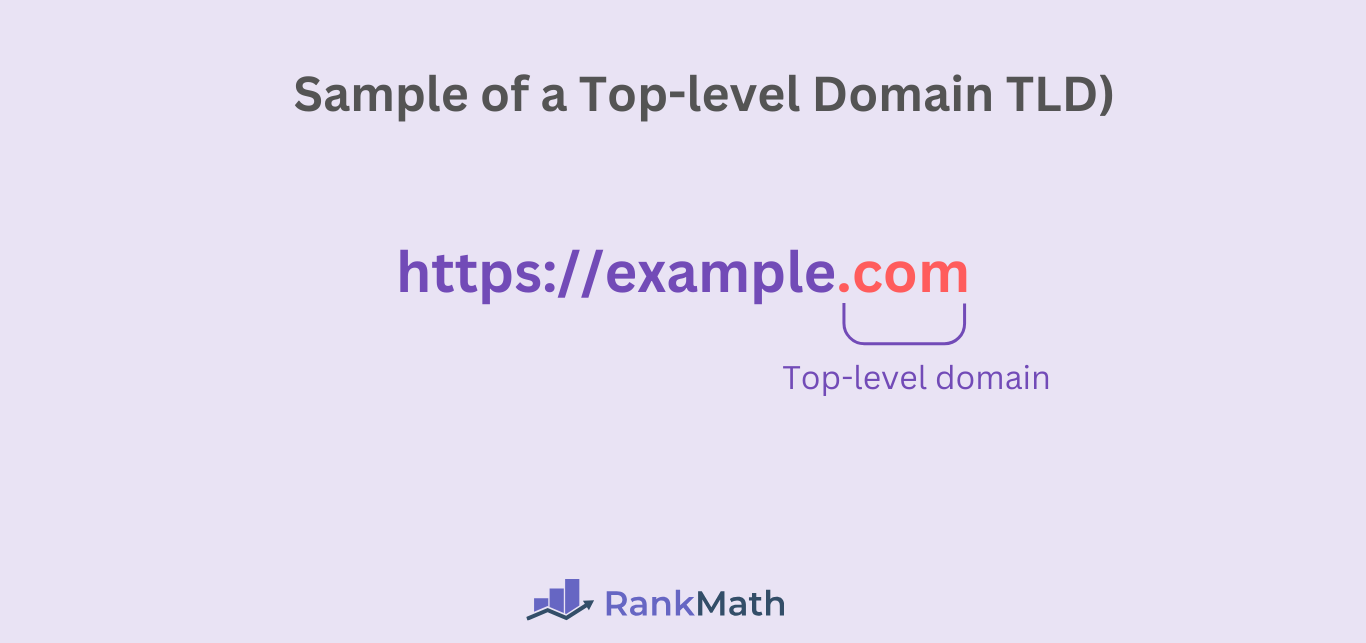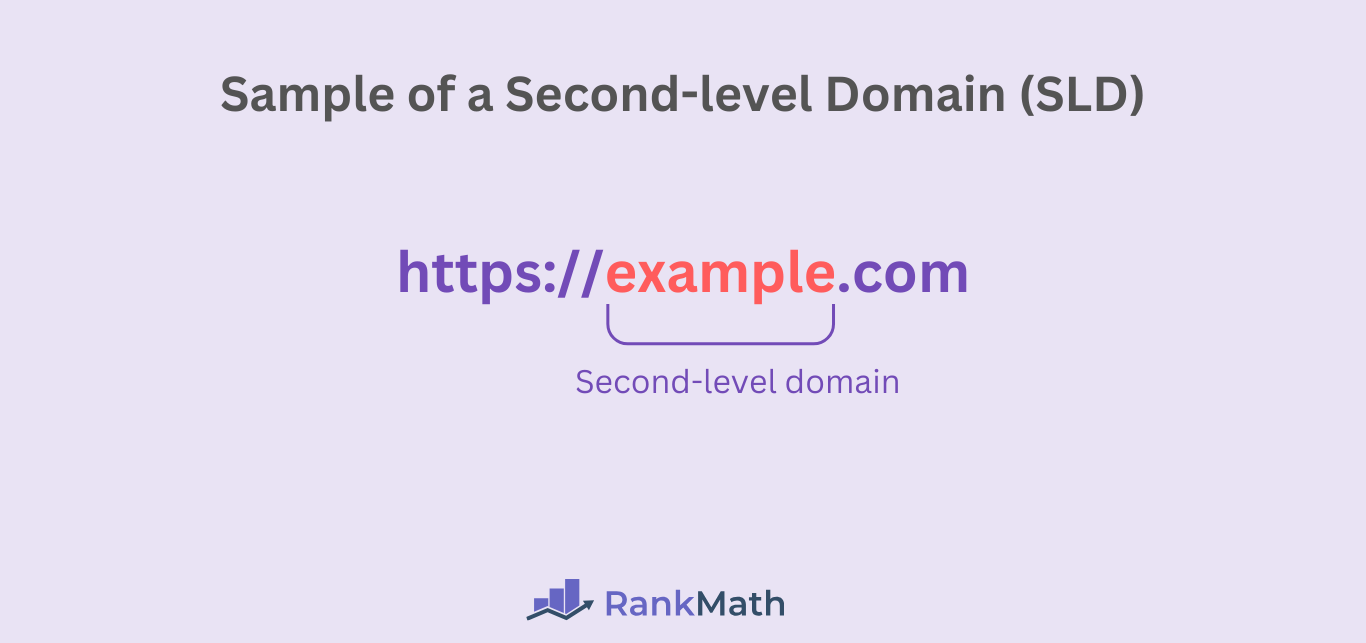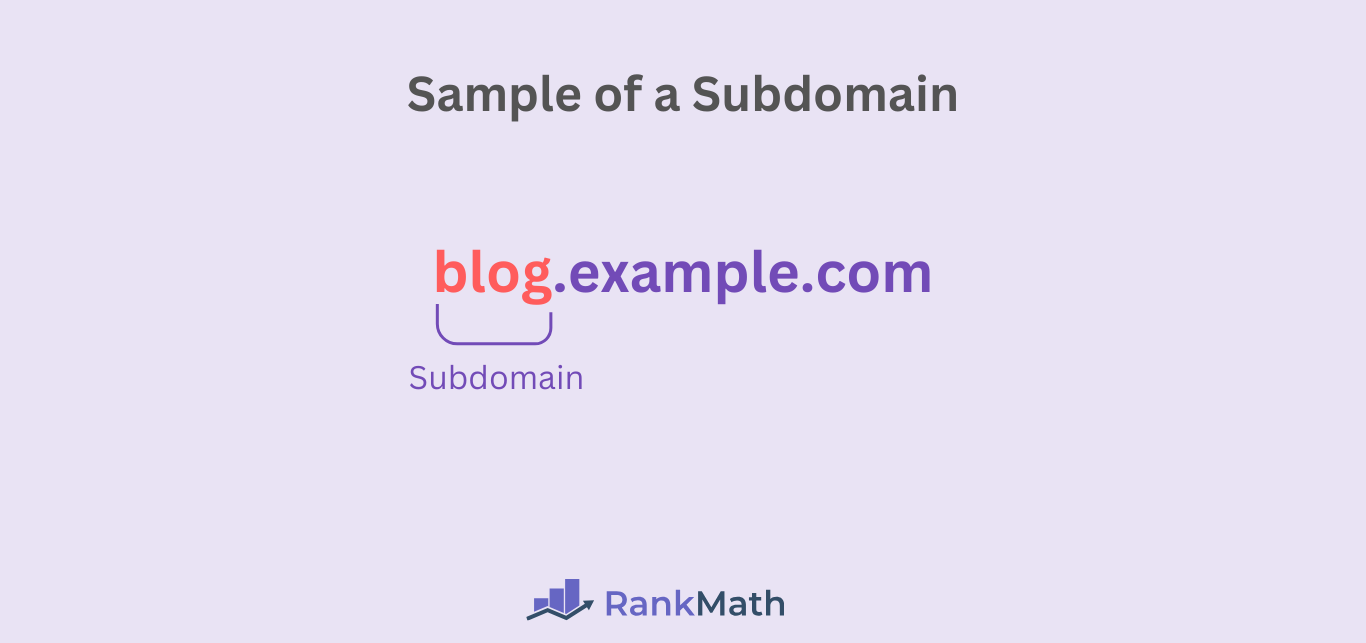What is a Domain Name?
A domain name is a string of text, numbers, and symbols used to identify a website on the internet. It is the part of a website’s URL that comes after the https://www. and before the first slash /. For instance, example.com is the domain name in the URL https://example.com/.

Think of the domain name as the address of a website. When you want to visit a website, you enter its domain name (address) into your browser.
Domain names are unique to the website they lead to. They often consist of letters, though they may also include numbers and hyphens. The point of a domain name is to provide a memorable and recognizable address for websites on the internet. That way, users can easily access and navigate to specific websites.
In this article, we’ll cover:
Why We Use Domain Names
In the earliest days of the internet, before domain names came into existence, users accessed websites using a string of numbers and dots called the IP address (short for Internet Protocol address). So, instead of going to verkkotunnus.fi to access a site, users would have typed something like 172.217.14.206.
While IP addresses worked, they were cumbersome and impractical for general use. So, the Domain Name System (DNS) was introduced to convert these IP addresses to domain names. This is what allows us to access sites using a domain name rather than its IP address.
However, computers and servers do not understand domain names. Instead, the Domain Name System converts the domain name into an IP address. Computers and servers then use the IP address to locate the site that is being requested.
Components of a Domain Name
A domain name consists of two or three parts, depending on the type of domain name you are looking at. Each part of the domain name is separated by a dot. We will now explain them one after another.
1 Top-Level Domain (TLD)
The top-level domain is the last part of the text in a domain name. It is also called a domain extension. For instance, .com is the top-level domain in example.com. Similarly, .net is the top-level domain in yourdomain.net. Some other common top-level domains include .org, .edu, .gov, .info, .biz, and .co.
2 Second-Level Domain (SLD)
The second-level domain is the part of the domain name that comes directly before the top-level domain. For instance, example is the second-level domain in example.com, and yourdomain is the second-level domain in yourdomain.net.
3 Subdomains
The subdomain is the part of the domain name that comes before the second-level domain. Not all domains contain a subdomain. For example, blogi is the subdomain in blog.example.com. Similarly, help is the subdomain in help.yourdomain.com, ja www is the subdomain in www.example.com.
Difference Between a Domain Name and a URL
Many people use the domain name and URL interchangeably. They are actually two different things. A domain name only contains a top-level, second-level, and sometimes, a subdomain. For example, yourdomain.com and help.yourdomain.com are examples of domain names.
A URL, on the other hand, refers to the link that leads to a specific webpage, location, or resource on the web. For example, https://yourdomain.com, https://help.yourdomain.com, and https://www.yourdomain.com/recipe/bread/banana-cake-bread.
The exact composition of a URL varies, but they can include:
- Protocol (HTTP tai HTTPS)
- Aliverkkotunnus
- Second-level domain
- Top-level domain
- Subdirectory (also called a subfolder)
- URL slug
- URL parameter
Domain Name Best Practices
Coming up with the perfect domain name will be somewhat challenging, especially considering there are hundreds of millions of domain names out there already. However, you should keep some best practices in mind when trying to generate one.
1 Keep It Short and Simple
Short domain names are easier to remember, type, and share. So, it is good practice to keep your domain name between six and 14 characters.
2 Avoid Complex Words
You want visitors to remember your domain name easily. So, it is good practice to avoid complex words or phrases that are difficult to spell or pronounce. You should use the correct spellings, too. So use “business” and not “bizness.”
3 Use Keywords
It is good practice to use keywords and descriptive text in your domain names. There are considerations that keywords even provide a little SEO benefit for your site. However, you should ensure the keywords naturally fit within the domain name and do not seem forced.
4 Avoid Hyphens and Numbers
Domain names can contain letters, numbers, and hyphens. However, hyphens and numbers can be forgotten or remembered incorrectly. You do not want your visitors wondering whether it is “5” or “five.” So, stick to letters to avoid these issues.
5 Choose the Right Top-Level Domain
There are 1500 top-level domains to choose from. So, you should consider your target audience and industry when selecting a top-level domain. You should stick to one your audience will easily remember, are familiar with, or can relate to.
For example, if you run an auto dealership, domain names like yourdomain.com and your domain.auto are more relatable and relevant than yourdomain.beauty or yourdomain.camera.
Impact of Domain Names on SEO
Google has provided some information and guidelines on how your domain name affects your SEO efforts. If you run a site or are planning to create one in the future, it is crucial that you understand them.
1 Keyword-Rich Domain Names Do Not Have SEO Benefits
Google used to give sites some extra SEO benefits for having their keyword in their domain name. Several years ago, it was even common for Google search results pages to put keywords in domain names in bold.
That, however, is no longer the case. Google has even confirmed that it does not give sites any SEO benefit for having keywords in their domain names, even though it added that such domain names could be helpful.
The benefits, however, come from visitors who are likely to click on the domain on search results pages because they expect such domain names to be relevant to their search.
2 Hyphens Do Not Matter Much
Some bloggers believe domain names with hyphens are better than those without one. Google has, however, clarified that this is not the case. It does not give sites any extra SEO benefit for having a hyphen in their domain name.
Google says it does not give domain names with hyphens any extra SEO benefit because such systems can be easily manipulated. However, Google did confirm that such domain names are more readable for visitors.
3 Avoid Domain Names Previously Used for Spam
Google recommends that you avoid domain names that were previously used for spammy purposes or other purposes you do not want to associate with. Visitors may associate those domain names with their previous use and may not want to visit the site for that reason.
Domain names that were previously used for spam may also have existing manual action penalties, which will make it challenging for them to rank on Google, even after they have changed ownership. To be on the safe side, Google recommends you run a domain name through archive.org’s Wayback Machine before purchasing it.
4 Expired Domain Names Have Little to No SEO Benefit
Many SEOs and bloggers love buying expired domain names. They do this to take advantage of the inbound links already pointing to it. That way, they do not have to begin their link-building efforts from scratch. Some bloggers may also point those links to their own sites.
Google mentioned that expired domains have little to no SEO benefits. You should also be aware that Google may sandbox the site if it notices that it has changed ownership or has been inactive for a while.
5 www Does Not Matter
Many bloggers wonder whether to name their site youdomain.com or www.youdomain.com. Google has confirmed that it does not matter. Whether you decide to use the www subdomain in your domain name is up to you.
However, it is important to know that Google treats URLs with www and those without as different webpages. So, this may cause user experience issues, especially if one of them does not work.
To prevent this, Google recommends that you ensure both domain name formats work. That way, your visitors can access your content regardless of whether your domain name includes a www.
6 Avoid Mobile Domains
Some sites maintain a separate m. subdomain for their mobile users. For example, they reserve yourdomain.com for their desktop users and redirect their mobile users to m.yourdomain.com.
Google recommends that you avoid this. Instead, make sure your site is optimized for mobile and desktop users.
7 Google May Take Some Time to Crawl Parked Domains
Google suosittelee that you do not leave a domain as parked. Instead, create some content, maybe a few paragraphs long, explaining the type of content that will be housed in the domain.
Google says this is necessary because it has a parked domain detector and can identify parked domains. As a result, it will crawl these domains less often, which may become an issue when the site goes live.
However, if the domain contains some content, the park domain detector will not need to confirm the page is no longer parked, allowing Google to crawl and index the page faster.


